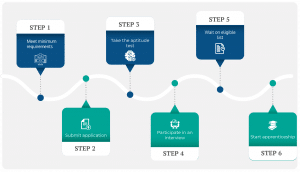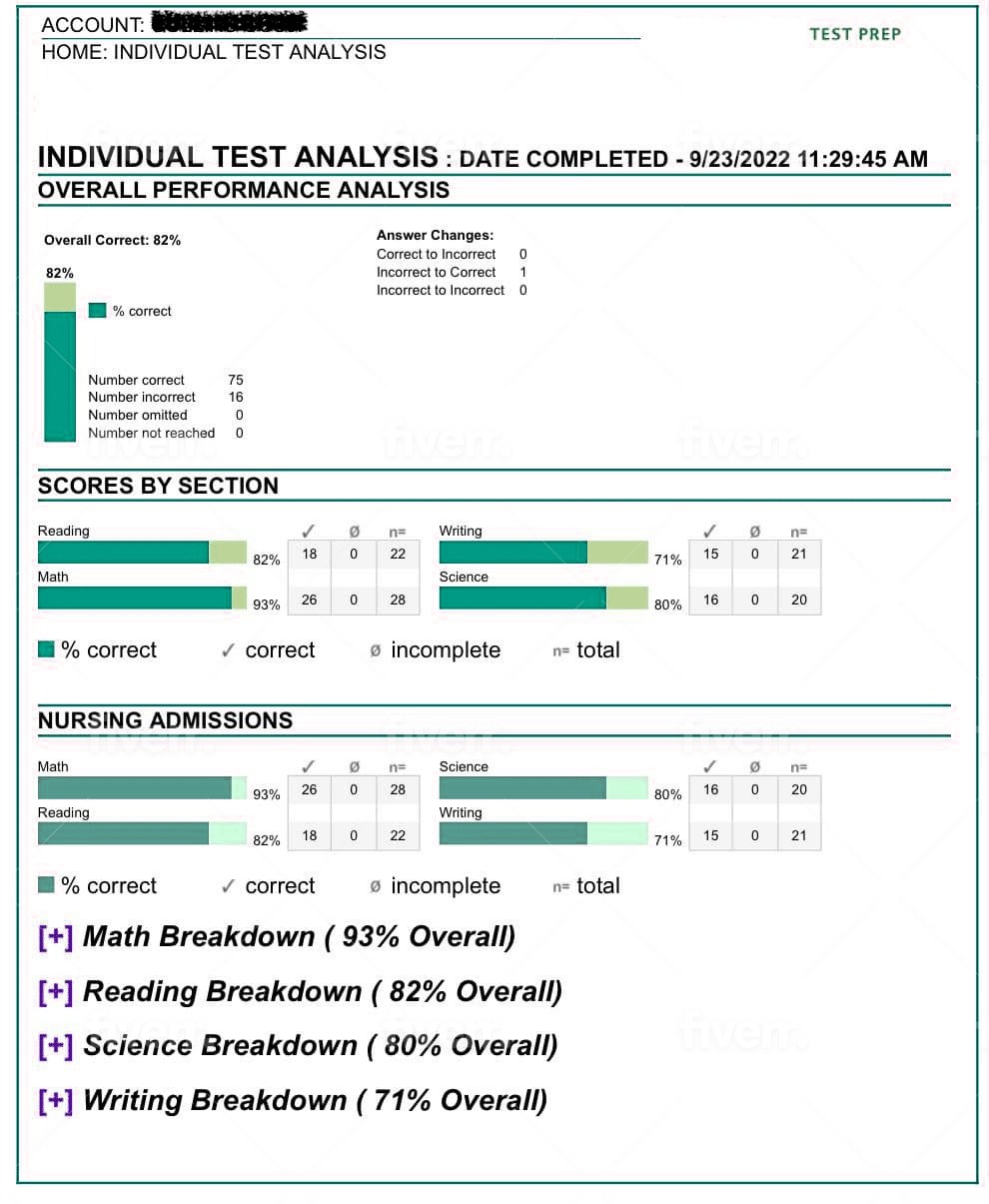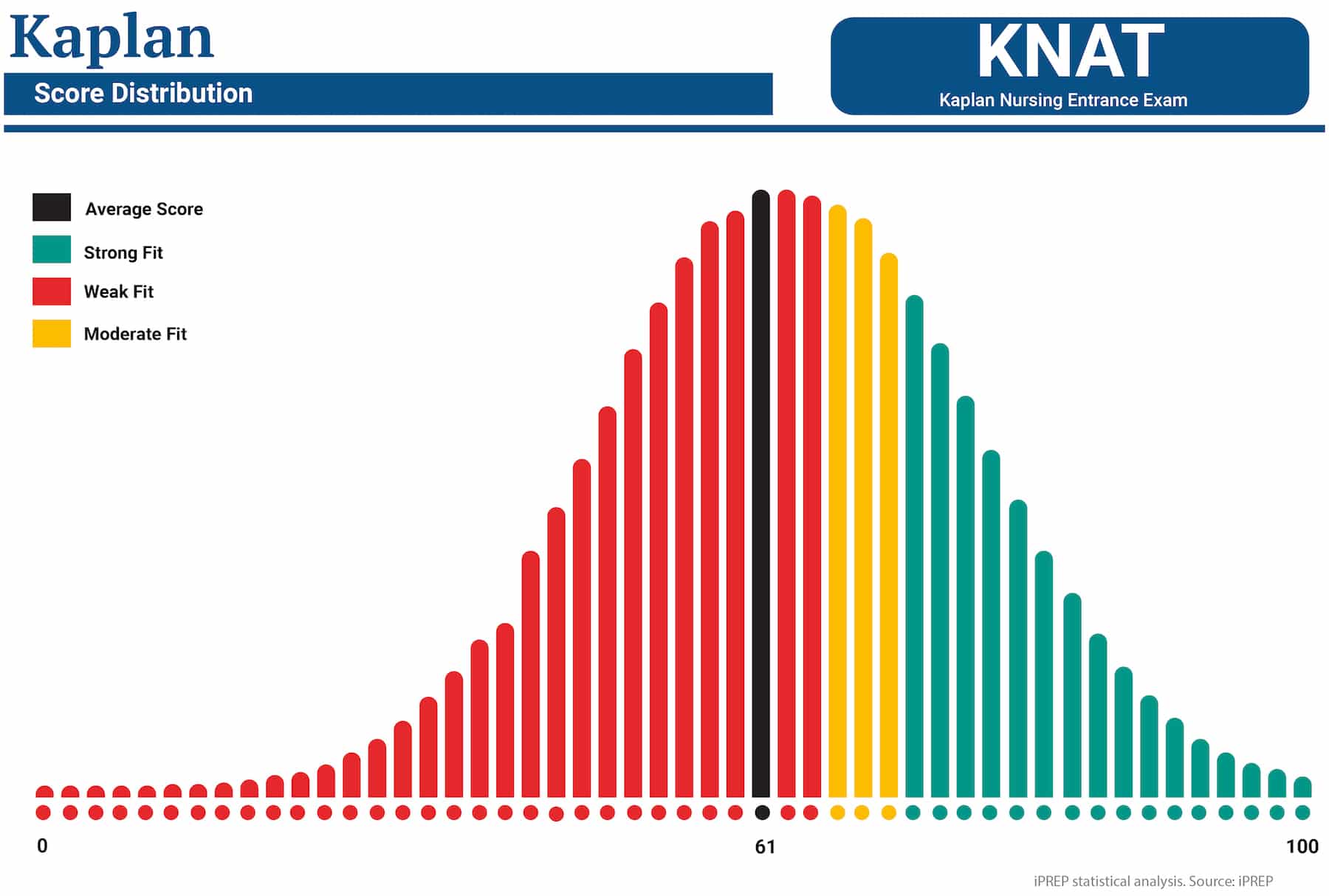
Welcome, future nurses! If you’re reading this, you’re probably preparing to take the Kaplan Nursing Entrance Exam, a critical step on your journey to becoming a healthcare professional. This comprehensive exam is more than just a formality; it’s a tool designed to measure your readiness for the rigorous demands of nursing school.
Here are some key facts about the Kaplan Nursing Entrance Exam:
Remember, this exam is not just a hurdle to clear, but a stepping stone towards your dream of becoming a nurse. It’s designed to ensure you have the necessary skills and knowledge to thrive in a nursing program and beyond. So, let’s dive in and explore how you can best prepare for this important exam!
Did you know that the Kaplan Nursing Entrance Exam is unique in its scoring? Unlike many standardized tests, it doesn’t provide a composite score. Instead, each section is scored separately, and schools often have different minimum score requirements for each section.
Interestingly, while the results are primarily used for nursing school admissions, some employers also consider these scores when hiring new graduates, viewing them as an indicator of a candidate’s potential for success in the nursing field.
Question types explained
Results scale & interpretations
Frequently asked questions
The Kaplan Nursing Entrance Exam is divided into four sections, each designed to assess a different set of skills. Here’s a quick overview of what each section entails and the skills necessary to perform well:
The Kaplan Nursing Entrance Exam is a timed test, with each section having a specific number of questions and a set time limit. This table provides a breakdown of the number of questions, time limit, and average time per question for each section:
| Section | Number of Questions | Time Limit | Average Time Per Question |
|---|---|---|---|
| Reading | 22 | 45 minutes | 122 seconds |
| Math | 28 | 45 minutes | 96 seconds |
| Writing | 21 | 45 minutes | 128 seconds |
| Science | 20 | 30 minutes | 90 seconds |
Breakdown of Kaplan Nursing Entrance Exam Sections by Number of Questions, Time Limit, and Average Time Per Question. Source: iPREP
Remember, each section is designed to assess a different set of skills that are crucial for success in nursing school and in your future nursing career. In the following sections, we’ll provide a detailed guide on how to tackle each type of question effectively.
The Reading section of the Kaplan Nursing Entrance Exam is designed to assess your reading comprehension skills. It consists of 22 questions that you’ll have 45 minutes to complete, giving you an average of about 122 seconds per question.
Here’s a comprehensive guide to help you prepare:
1. Understand the Question Types
In this section, you’ll encounter passages of text followed by questions that test your understanding of the content. The questions typically fall into the following categories:
2. Develop Effective Reading Strategies
To perform well in this section, you need to develop effective reading strategies. Here are a few tips:
3. Practice Active Reading
Active reading is a skill that can be developed with practice. Regularly reading a variety of texts—such as articles, books, and reports—can help improve your reading comprehension skills. Try to practice active reading strategies as you read, such as predicting, questioning, and summarizing.
4. Review and Understand
After answering each question, take a moment to review your answer and ensure it makes sense in the context of the passage. If you’re unsure about an answer, try to eliminate incorrect options to increase your chances of choosing the correct one.
Remember, the Reading section is not just about reading quickly—it’s about understanding what you’re reading. With the right strategies and plenty of practice, you can improve your reading comprehension skills and perform well in this section of the Kaplan Nursing Entrance Exam.
Sample Reading Question
Passage:
“Despite its name, the koala bear is not a bear at all. It is a marsupial, or pouched mammal. After giving birth, a female koala carries her baby in her pouch for about six months. When the infant emerges, it rides on its mother’s back or clings to her belly, accompanying her everywhere until it is about a year old.”
Question:
What is the main idea of the passage?
C. Koala bears are marsupials, not bears.

The primary purpose of the Kaplan Nursing Entrance Exam is to assess your readiness for nursing school. The exam is designed to measure your understanding and skills in four crucial areas: Reading, Mathematics, Writing, and Science. These areas are foundational to your success in a nursing program and, ultimately, in your nursing career.
The Kaplan Nursing Entrance Exam covers a wide range of skills necessary for nursing school. The Reading section assesses your ability to understand and analyze complex written information. The Mathematics section tests your understanding of basic math concepts and your ability to apply these concepts to solve problems. The Writing section evaluates your written communication skills, and the Science section tests your understanding of basic scientific concepts, particularly in human physiology.
The Kaplan Nursing Entrance Exam is a standardized test, ensuring that all test-takers are assessed under the same conditions. The exam is usually administered in a computer-based format at a designated testing center. This ensures a controlled and standardized testing environment, allowing for fair comparison of scores.
The Kaplan Nursing Entrance Exam is used by hundreds of nursing schools across the United States as part of their admissions process. The scores from the exam provide an objective measure of a candidate’s readiness for nursing school, helping admissions committees make informed decisions.
Finally, the Kaplan Nursing Entrance Exam is more than just a test—it’s a preparation for your future nursing career. The skills assessed by the exam are not only essential for nursing school but also for your future work as a nurse. By preparing for and taking the exam, you’re not just working towards nursing school admission—you’re laying the foundation for your future success in the nursing field.
The Kaplan Nursing Entrance Exam is commonly referred to by the following names:
“I encourage you to practice as much as possible before taking the Kaplan Nursing Entrance Exam. The more you practice, the more confident you will be on the day of the test.”
Source: iPREP customer
iPREP: Concise. Focused. What you need.
The Kaplan Nursing Entrance Exam consists of four sections: Reading, Mathematics, Writing, and Science. Each section is timed separately, with a total testing time of approximately 165 minutes.
The Kaplan Nursing Entrance Exam uses a scaled scoring system. Each section of the exam is scored separately, and these scores are then combined to give a total score. The maximum score for each section is 100, and the total score is the average of the four section scores.
The Kaplan Nursing Entrance Exam is a computer-based test, meaning that you’ll take the exam on a computer at a designated testing center. This format allows for immediate scoring and results.
If you’re not satisfied with your score, you can retake the Kaplan Nursing Entrance Exam. However, you must wait at least 45 days between attempts, and you can only take the exam three times in a 12-month period.
Kaplan provides accommodations for test takers with disabilities in accordance with the Americans with Disabilities Act (ADA). If you require accommodations, you must submit a request and provide documentation of your disability.
A variety of test preparation materials are available for the Nursing Entrance Exam, including study guides and practice tests. These materials are designed to help you understand the exam format, review key concepts, and practice answering the types of questions you’ll encounter on the exam.
“The reading section was the most difficult for me. The passages were long and the questions were very specific. I had to read the passages multiple times to understand what they were asking. I also found that the reading section was very time-consuming.
The writing section was a little easier. The questions were mostly about grammar and punctuation. I felt like I knew how to answer most of the questions, but I did make a few careless mistakes.
The math section was the easiest for me. The questions were mostly about basic math concepts like fractions, decimals, and percentages. I didn’t have any trouble with this section.
The science section was in between the reading and writing sections in terms of difficulty. The questions were about anatomy, physiology, and medical terminology. I had to study a little bit for this section, but I felt like I was prepared for it.”
Source: iPREP customer
Understanding your Kaplan Nursing Entrance Exam results is crucial to assessing your readiness for nursing school. The score report provides a comprehensive view of your performance across different areas, allowing you to identify your strengths and areas for improvement. Here’s a detailed guide on how the results are scored and interpreted:
Raw Score
The raw score is the number of questions you answered correctly in each section. Since each section varies in the number of questions, the raw score alone doesn’t provide a complete picture of your performance. It’s the starting point from which other scores are calculated.
Scaled Score
Each raw score is converted into a scaled score ranging from 0 to 100. This process ensures that scores are comparable across different versions of the exam, accounting for any variations in difficulty.
Percentile Ranking
Your percentile ranking indicates the percentage of test-takers who scored lower than you. For example, if your percentile ranking is 85, it means that you scored higher than 85% of test-takers.
Sub-Scores
The Kaplan Nursing Entrance Exam provides sub-scores for each of the four sections: Reading, Mathematics, Writing, and Science. These sub-scores allow you to see how you performed in each area.
Score Range
The score range provides a context for understanding your scaled score. It shows the range of scores that test-takers typically achieve. Comparing your score to the score range can give you an idea of how well you performed relative to other test-takers.
Interpreting Your Scores
While each nursing school sets its own score requirements, a scaled score of 70 or above in each section is generally considered competitive. However, it’s important to check the specific requirements of the schools you’re applying to.
Your score report can help you assess your readiness for nursing school and identify areas where you need to improve. If your scores are lower than you’d like in a particular area, you might want to focus your study efforts on that area.
This table provides an overview of the scoring system for the Kaplan Nursing Entrance Exam, including raw scores, scaled scores, total scores, and percentile ranks. The example demonstrates how raw scores are converted to scaled scores and how the total score is calculated.

The Kaplan Nursing Entrance Exam is a standardized test that assesses your readiness for nursing school. It covers four areas: Reading, Mathematics, Writing, and Science.
How is the Kaplan Nursing Entrance Exam scored?Each section of the exam is scored separately on a scale from 0 to 100. The total score is the average of the four section scores.
What skills does the Kaplan Nursing Entrance Exam measure?The exam measures your reading comprehension, mathematical ability, writing skills, and understanding of basic scientific concepts, particularly in human physiology.
How long is the Kaplan Nursing Entrance Exam?The total testing time for the Kaplan Nursing Entrance Exam is approximately 165 minutes.
How is the Kaplan Nursing Entrance Exam used in the nursing school application process?The Kaplan Nursing Entrance Exam is used by nursing schools to assess applicants’ readiness for nursing school. The scores provide an objective measure of a candidate’s abilities in key areas.
What is a competitive score on the Kaplan Nursing Entrance Exam?While each nursing school sets its own score requirements, a scaled score of 70 or above in each section is generally considered competitive.
Can I retake the Kaplan Nursing Entrance Exam if I’m not satisfied with my score?Yes, you can retake the exam if you’re not satisfied with your score. However, you must wait at least 45 days between attempts, and you can only take the exam three times in a 12-month period.
Are accommodations available for test takers with disabilities?Yes, Kaplan provides accommodations for test takers with disabilities in accordance with the Americans with Disabilities Act (ADA).
How can I use my score report to improve my performance?Your score report can help you identify your strengths and areas for improvement. If your scores are lower than you’d like in a particular area, you might want to focus your study efforts on that area.
Here are seven practical and effective test-taking tips for the Kaplan Nursing Entrance Exam:
Remember, the Kaplan Nursing Entrance Exam is not just about testing your knowledge—it’s about assessing your readiness for nursing school. Approach the exam with confidence and remember to stay calm, focused, and positive. Good luck!
The Kaplan Nursing Entrance Exam is provided by Kaplan, Inc., a leading provider of educational and career services. Founded in 1938 by Stanley Kaplan, the company has a long history of helping students achieve their academic and career goals. Kaplan, Inc. is a subsidiary of Graham Holdings Company and its largest division.
Kaplan offers a wide range of services, including test preparation, professional training, and higher education programs. The company operates in over 30 countries and serves more than one million students each year. In addition to the Kaplan Nursing Entrance Exam, some of Kaplan’s top products include preparation courses for the SAT, ACT, GRE, GMAT, LSAT, MCAT, and the USMLE, among others.
Disclaimer – All the information and prep materials on iPrep are genuine and were created for tutoring purposes. iPrep is not affiliated with Kaplan Nursing, Kaplan, or any other company mentioned.
Get to know what the Kaplan Nursing Admissions Test will be like by practicing with these sample questions:
Question 1 of 8
You all know of the Natural Bridge in Virginia. You perhaps have heard how the first President of the United States, in the athletic vigor of his youth, climbed and carved his name high on its cliff. If a score of such bridges, however, were thrown together side by side, they would not be so large as the Natural Bridge of Pine Creek, Arizona. It is to the world’s natural bridges what the Grand Canyon of Colorado is to the world’s chasms—the greatest, grandest, and most bewildering. The actual length of the Arizona bridge is over 500 feet, five times the span of the Virginia bridge, and the breadth is over 600 feet, more than 12 times as wide as the one in Virginia. There are also countless minor bridges in the Southwest. One is a curious natural bridge near Fort Defiance, New Mexico. This is small but unusual, for it was carved not by rock particles carried in water but by sand-laden winds.
Natural bridges are usually made by the action of:
The correct answer is B.

The complete iPREP course includes full test simulations with detailed explanations and study guides.

In the first 30 minutes of use I have learned so much more than skipping along the internet looking for free content. Don’t waste you time, pay and get tests that actually help.
January 28, 2020 at 7:49 PM
Welcome to iPrep’s Kaplan Nursing Entrance Exam preparation course.
This course will help you boost your skills and with it your confidence towards your upcoming Kaplan Nursing Entrance Exam. This is a test that you need to pass in order to be accepted to a variety of health-related academic programs. The course will provide you with the following tools and benefits: